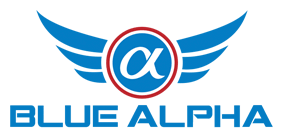Overview of my Duty Belt Setup
Article written by an Arizona Peace Officer -6.5 years sworn, 4.5 years as a full-time SWAT operator.
The Duty Belt
A Duty belt can have many different names such as a Battle belt or Police belt. You will likely spend every hour of every shift with some sort of belt on, making it imperative that the setup makes sense and meets your needs.
The belt set up can vary on the position or the type of work you are doing. As a full-time SWAT operator, I have two belts. I have a belt that I wear at the office and on operations where I am sitting in my vehicle (street jumps, vehicle containment operations, quick-reaction force details, dignitary protection details, etc.). And I have another belt that I use for high-risk search warrants, barricaded subjects, building clearing, etc.)

Standard Duty Belt
My first belt that I wear most often, has only the essentials. Oftentimes what is carried is dictated by department policy. My department requires that I carry my duty handgun, 1 extra magazine and 1 set of handcuffs.
There are tons of options on the market for a standard tactical belt. They commonly come in different widths (1.5” to 2.0”). This belt needs to be durable enough to withstand the weight of a holstered handgun and additional items. Extra features may include molle webbing for more secure gear attachment or a D ring for rappelling operations.
There are also a large variety of holster options out there. Some options allow you to remove the holster and weapons from the belt as a package, other holsters will be fastened to your belt in a more permanent setup.
Attachments also allow the holster to sit flush against your belt or sit lower down your hip to make a more efficient draw. As for my extra magazine and handcuffs, there are cases that carry both, allowing for more efficient removal and space optimization. This should be worn on the belt allowing for the quickest access, especially the extra magazine.
For me, this is the most minimal setup I can have and still function in a worst-case scenario. If I am forced to get in a gunfight in this setup, I have the ability to shoot, reload and detain the individual once I have won. Adding anything else to this setup I would be weighing comfort and carrying extra weight.
Tactical Duty Belt
My second belt is much more of a typical battle belt which has molle attachments that have all the extra items you would want in a drawn-out operation. I utilize a hook-and-loop inner and outer belt setup. This is common in a SWAT battle belt setup because of the extra weight of the items being carried.
Also, tactical belts are often wider than most standard belt loops. Running a smaller under belt with hook-and-loop through your belt loops and then a larger tactical belt over that is common and guarantees the belt doesn’t move when you change positions.
My battle belt has a metal cobra style buckle. This buckle is common, but plastic clip-style buckles are also very common. The molle panels allowed me to more securely attach all of my equipment. Again, on my primary side I have a holster attachment that allows my holstered duty weapon to quickly clip in.
Moving clockwise around my battle belt, next I have a small medical pouch containing wound packing material and a swat-t tourniquet. Continuing clockwise I have a large dump pouch. This sits at my 8 o’clock position on my belt. Dump pouches are great on the range and would be great in a long gunfight, but these are rare in law enforcement. I keep a set of flex cuffs in there and my gloves. I often get assigned to the less-lethal 40mm launcher and I keep my extra foam-tip rounds in my dump pouch.
Continuing, at my 9 o’clock position I have a tourniquet in a vertical pouch. The flap for the pouch faces down to allow gravity to assist getting it out in the event I am reaching for it with a wounded arm. At my 10 o’clock position I carry an extra rifle magazine. I prefer a 20-rounder in this magazine pouch because it doesn’t interfere with my plate carrier. This is also my primary magazine for a reload.
Lastly, up front at the 11 o’clock position, I carry two handgun magazines. I use a soft pouch for these, so they have some play in them and don’t jab me in my midsection as I am sitting. I would recommend getting into different positions when you think you have your battle belt setup to test it out for comfort and practicality. It’s also a good idea to do some drills where you pretend an arm is immobilized and see if you can reach everything on your battle belt with your working arm. I’ve trained enough to know I can reach my handgun at 3 o’clock with my left hand and I can reach my tourniquet at 9 o’clock with my right hand in a worst-case scenario.
This setup has worked for me for years now. It may not be the ideal setup for everyone though, as everyone’s mission set is different. It is also common to move things around based on new gear on the market or something you experienced or heard at a training event. What I can’t understate though is the importance of having a method to your battle belt setup and get comfortable wearing it and knowing where items are. It may save your life!
About Blue Alpha
Blue Alpha is based in Newnan, Georgia and we are committed to producing American-made products of the highest quality with the best customer service. We make our products for, and deeply appreciate, all responsible gun owners, law enforcement, military, and others who help make the world a better place. Check out our highly popular Double Belt Rig.
